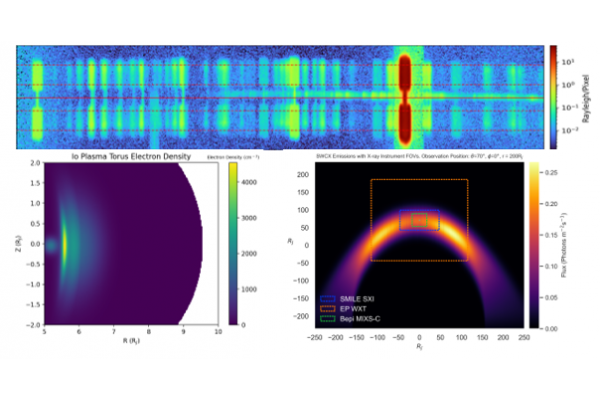MODELLING SOFT X-RAY GENERATION AT JUPITER: THE MAGNETOSHEATH AND IO PLASMA TORUS
Seminars
Semester 2
Soft X-rays generated via charge exchange (CX) are widely used to study the interaction between charged and neutral particles across the solar system. In Jupiter’s magnetosheath—the region between the bow shock and magnetopause—Solar Wind Charge Exchange (SWCX) occurs when highly ionized solar wind ions collide with neutral hydrogen. By modeling these emissions and developing an imaging framework to simulate spacecraft observations, we assess whether the magnetosheath is a viable target for X-ray studies.
Deeper within Jupiter’s magnetosphere, the Io Plasma Torus (IPT) is a ring of plasma sourced from the intense volcanic activity on Io. XMM-Newton observations confirm it as an X-ray bright region, but poor spectral resolution limits the information that can be extracted. To estimate x-ray emissions, we construct a model of ion distributions and charge states. Using data from the UV satellite Hisaki, we determine the spatial distributions of low-charge sulfur and oxygen ions (S+, S²+, S³+, O+, O²+). Higher charge states (e.g., O⁷+ and S⁷+) can be inferred from XMM observations, albeit with larger uncertainties. These datasets together define an empirical charge state distribution in the IPT, guided by the Saha ionization equation.
This IPT model will then be used to generate spectra and emission rates in the X-ray band. Combined with the imaging model, this will allow us to simulate observations for future spacecraft missions. Additionally, the IPT model can reveal long- and short-term variations in the torus, potentially linking them to auroral activity—whose underlying drivers remain unknown.
Additional information: Mr. Fenn LEPPARD, fleppard@connect.hku.hk










